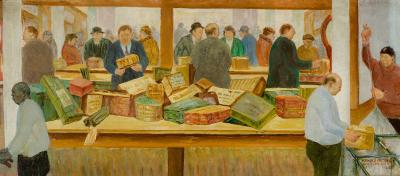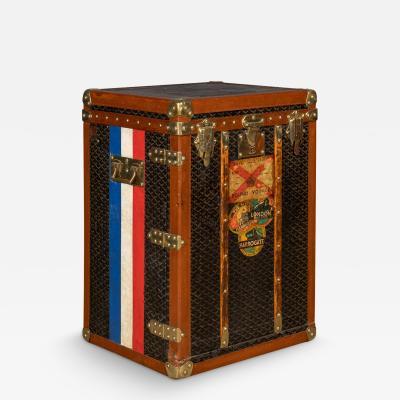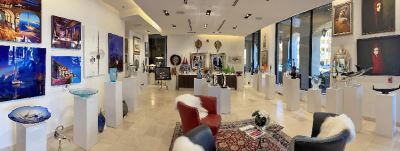Grandma Moses and the ‘Primitive’ Tradition
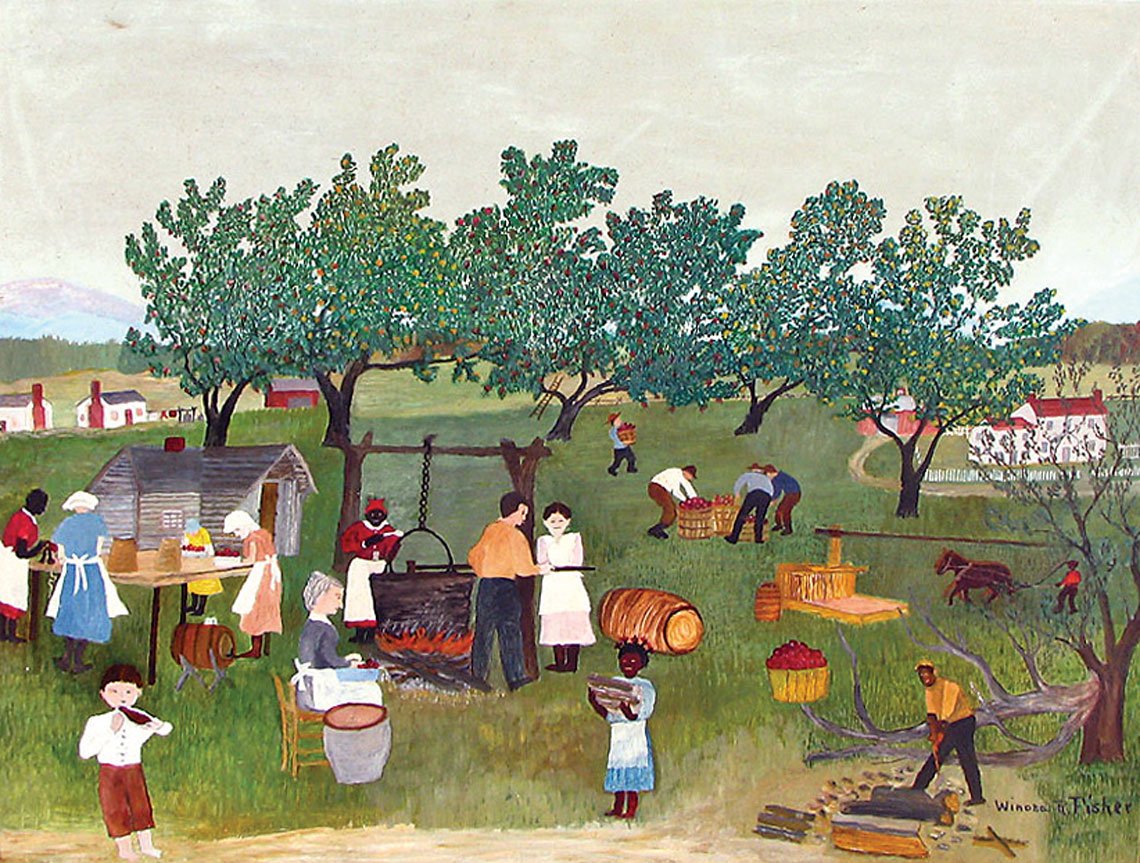 |
| Winona Robertson Fisher: Apple Butter Making in Virginia, c. 1953. Courtesy of Comollo Antiques & Fine Wine, Manchester, VT. |
The Bennington Museum is home to the largest public collection of paintings by Anna Mary Robertson Moses (1860-1961). Better known as Grandma Moses, the artist was catapulted to international fame during the 1940s as the result of her charming, naïvely executed, paintings of rural American farm life. To commemorate the 150th year of Grandma Moses’ birth, the Bennington Museum presents Grandma Moses and the ‘Primitive’ Tradition on view June 11 through October 30, 2011. This exhibition, the largest of Moses’ work organized by the museum in over a decade, is to be installed in three of the museum’s eleven galleries. This temporary exhibition is in addition to the permanent Grandma Moses Exhibit housed in the Grandma Moses Gallery.
As the best known ‘primitive’ artist of the twentieth-century, Grandma Moses and her work are often seen as exceptional, outside the mainstream of American art history. This exhibition provides a context in which to better understand Moses’ work, by examining the history of ‘primitive’ painting in America, from the self-taught and amateur painters of the nineteenth century to the modern ‘primitives’ who came to fame around the same time as Moses.
Grandma Moses and the ‘Primitive’ Tradition features 55 works — 20 by Moses and 35 other artists who painted in the ‘primitive’ tradition. Combined with the paintings in the permanent Grandma Moses Exhibit housed in the Grandma Moses Gallery, there will be 45 works by Grandma Moses on view at the museum. These works are drawn from the Bennington Museum’s world-renowned Grandma Moses Collection, and augmented by strategic loans from other institutions, such as the Fenimore Art Museum in Cooperstown, New York, the Galerie St. Etienne in New York City, and private collections.
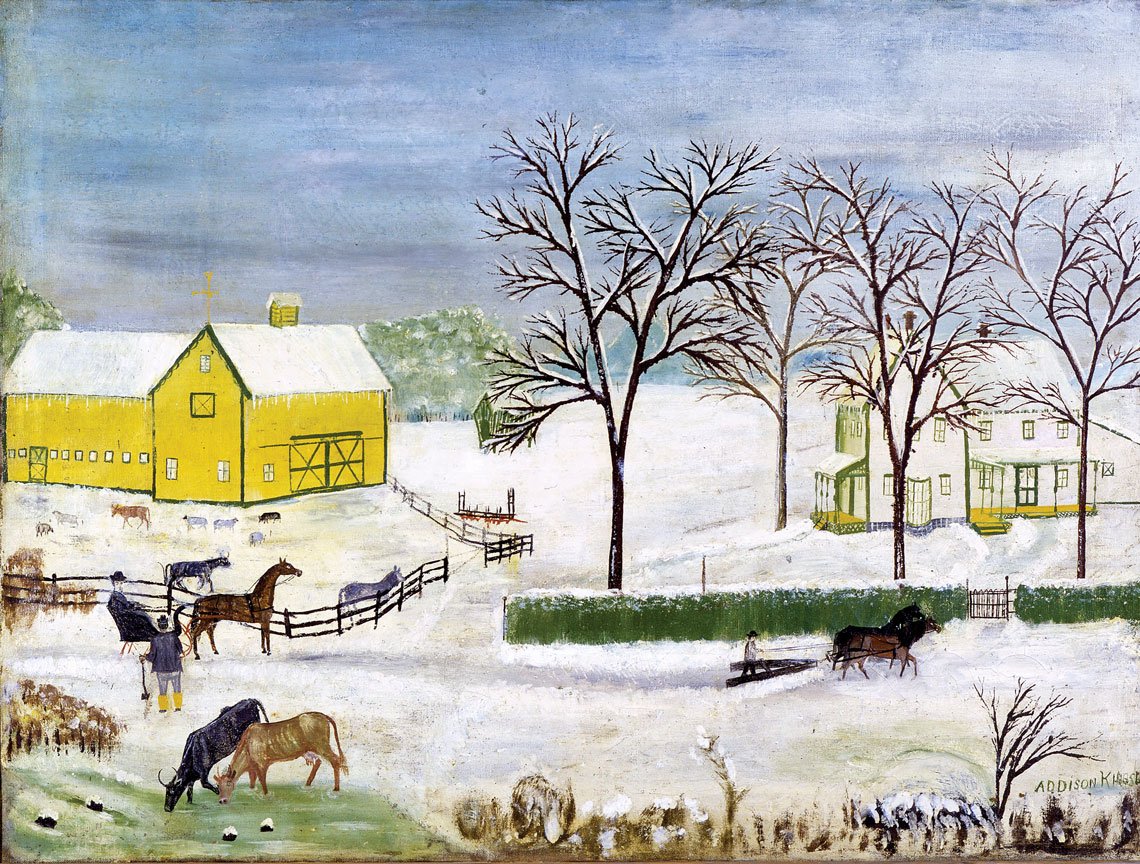 |
| Addison Kingsley: Winter Landscape with Yellow Barn, ca. 1860. Courtesy Galerie St. Etienne, NY. |
Three major themes are explored in the exhibition.
Historic Roots
Growing up in rural, upstate New York, in a family that embraced the arts, Moses was surrounded by the decorative, stylized work of self-taught and amateur artists and “popular” art, such as the prints of Currier and Ives. Moses’ own work springs directly from these popular, centuries-old traditions. In this exhibition, ‘primitive’ paintings from the nineteenth and early twentieth centuries by anonymous masters and more renowned painters such as Ruth Henshaw Bascom, Joseph H. Hidley, Joseph Pickett, J.O.J. Frost, and Paul A. Seifert are juxtaposed with Moses’ paintings to illustrate the many parallels, both direct and indirect. Popular printed sources served as inspiration for self-taught artists for centuries, and Moses was no exception. Many of her most popular paintings are based upon Currier and Ives prints and other popular print sources depicting stereotypical New England life. Serving as an inspiration for Moses, original Currier and Ives prints are shown next to her works.
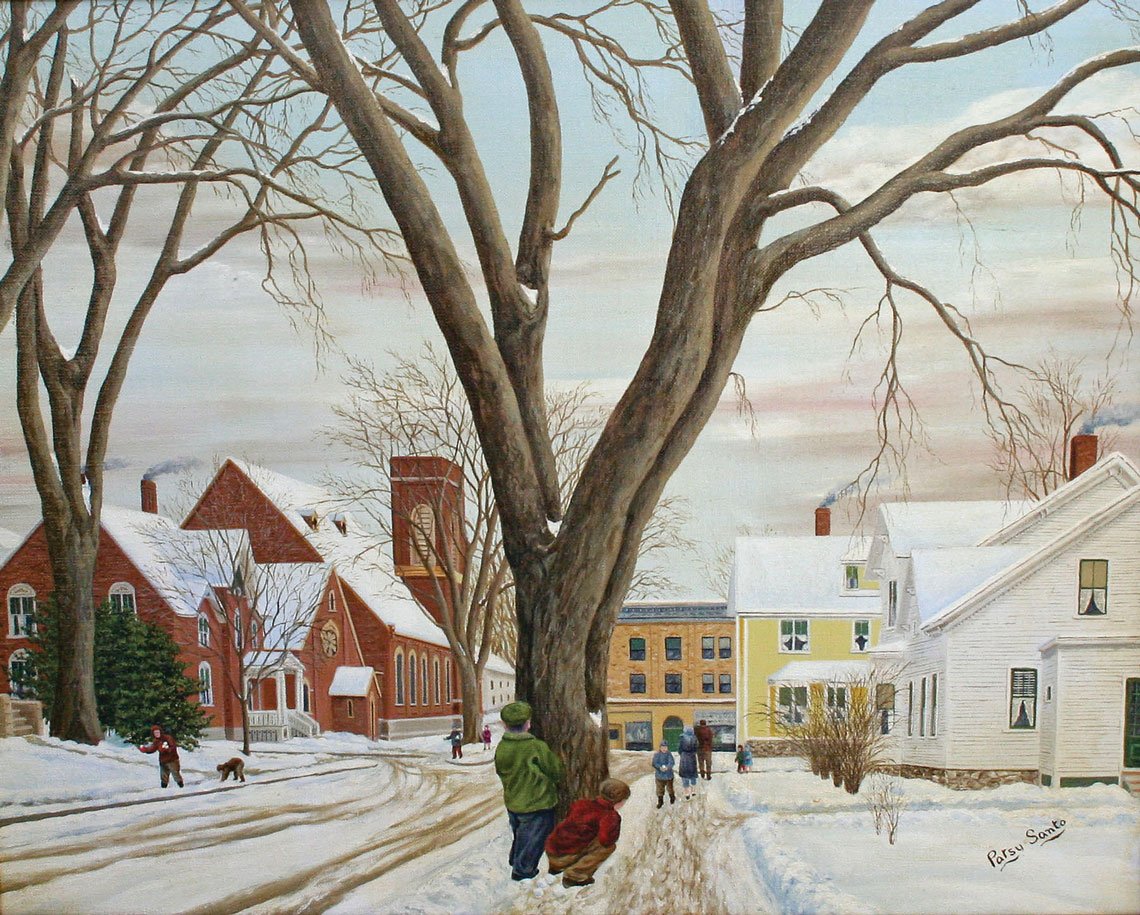 |
| Pasquelle ‘Patsy’ Santo: Ready for Battle, circa 1956. Collection of Bennington Museum. |
Modern Primitives
Moses’ work is also examined within the context of the increased interest in ‘primitive’ art that began in America during the 1920s and continued through the 1960s. Initiated by modern artists and curators of the time, it was largely the result of this phenomenon that guided Moses to achieve such great renown. While her work earned international recognition, many other contemporary self-taught, ‘primitive’ artists such as John Kane, Morris Hirschfield, and Bennington, Vermont native Patsy Santo achieved national recognition during this period. On view alongside Moses’ work, paintings by these artists and others provide visitors with a better understanding of the context in which her work was originally shown. Further, it illustrates the variety found within the ambiguously defined category of ‘modern primitive.’
 |
| Grandma Moses: The Checkered House, 1853. Copyright © 1985, Grandma Moses Properties Co., NY. Collection of Bennington Museum. |
Family Tradition
It was common among folk artists of all periods to share their artistic talents with family members and pass along their gift to younger generations. Anna Mary’s own father, Russell King Robertson, was an amateur painter who encouraged his young daughter, and her brothers, to paint. In her autobiography Moses notes, “He liked to see us draw pictures.” The exhibition includes a landscape painted in the ‘primitive’ tradition by Grandma’s father, which likely hung in the family home when Anna Mary was a child. Many members of the Moses Family took up painting as both a hobby and a vocation after seeing the success Grandma garnered. They all worked in a related ‘primitive’ style. Works by Fred E. Robertson, Moses’ brother, Forrest King Moses and Winona Robertson Fisher, Grandma’s son and daughter, and Will Moses, Grandma’s great-grandson, are included in the exhibit.
 |

















